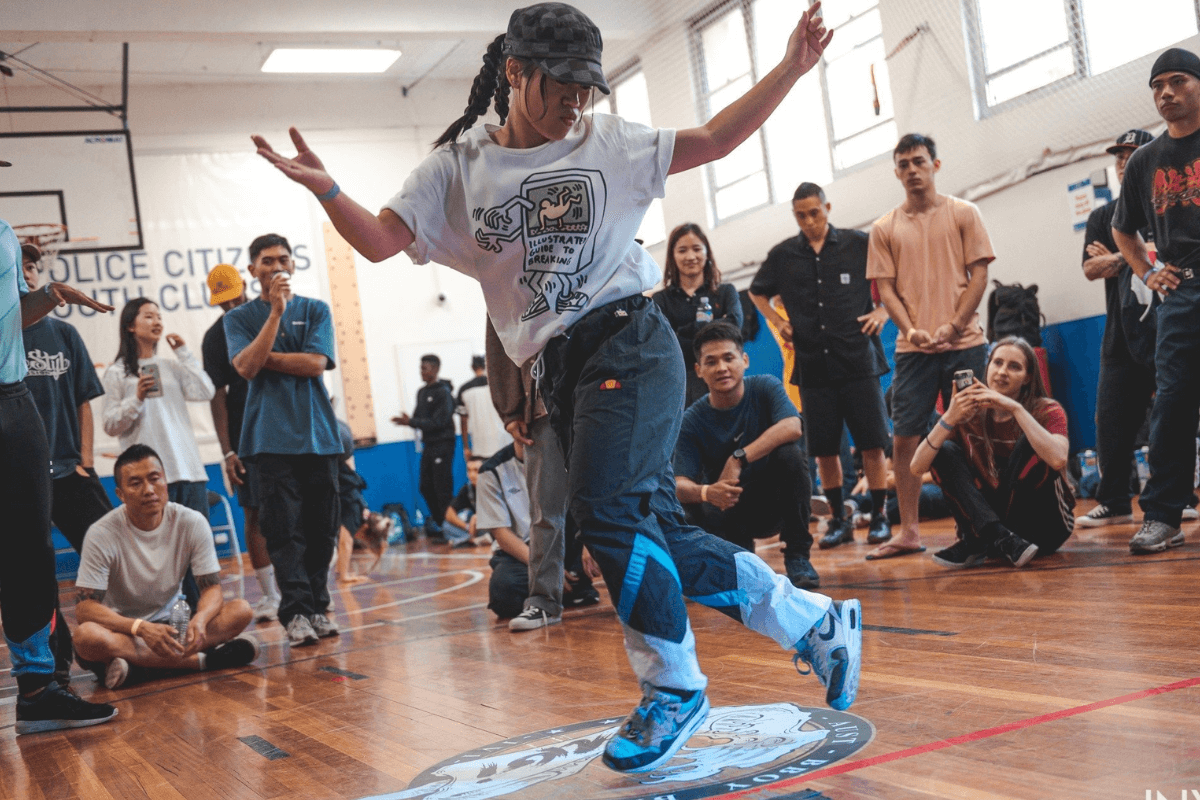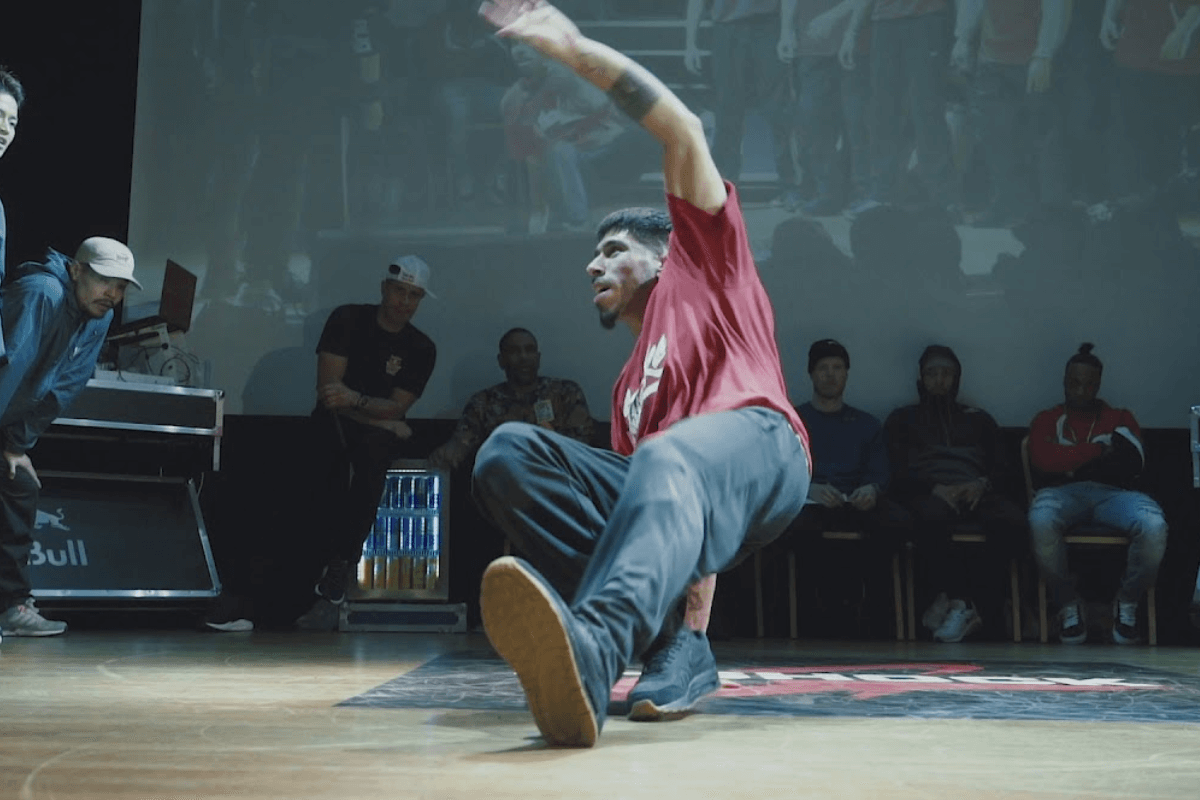B-boying, also known as breaking or breakdancing, is a super energetic type of street dance. It began in the bustling city of New York back in the 1970s and has become popular everywhere since then. One of the earliest moves that breakdancers usually start with is called the 6-step.
What is 6-step? The 6-step is the foundational footwork for lots of other cool moves in breakdancing. It’s like the ABCs of b-boying. It’s super important because it’s usually one of the first things breakers learn, and it’s also the starting point for a lot of other cool moves. Once you get the hang of the 6-step, you can start building up your skills with different variations.
Imagine it like this: you’re walking in a circle on the ground, but with some extra flair. That’s the basic idea of the 6-step. But here’s the exciting part: there are so many ways to jazz it up!
You can change the direction you’re going, twist your body, throw in some fancy footwork, or even add in freezes and power moves. It’s like a canvas where breakers can get creative and show off their style. So, the 6-step isn’t just a simple move; it’s a whole world of possibilities waiting to be explored!
At first, the 6-step might seem a bit scary with all its fast twists and turns. But don’t worry! With a bit of practice and by breaking it down into smaller parts, you’ll soon find yourself getting better and better at it. Just keep at it, and soon you’ll be busting out some impressive moves of your own!
Learning the footwork while standing
To get the hang of the six steps, start by practicing them while you’re standing up. This is a great way for beginners to understand the dance before trying it out on the floor.
Practice the six steps while standing up

Before you begin, imagine a small circle in front of you. You’ll be moving around this circle until you’re back where you started.
- First, step forward with your right foot while keeping your left foot still.
- Next, bring your left foot behind and to the right of your right foot, crossing them over.
- Then, step out with your right foot so your feet are shoulder-width apart.
- Cross your left foot over your right foot.
- After that, step your right foot back while keeping your left foot in place.
- Finally, step your left foot back so your feet are shoulder-width apart again, and you’re back where you started.
Take your time with each step and practice until you feel comfortable with the movement.
Take it easy and practice
- Don’t rush! It’s okay if the movements feel strange at first. It’ll take some time to get used to them.
- Practice these initial six steps at your own pace.
- It’s important to master them while standing before moving on to the floor.
Dance to the beat
- Put on some music and practice the steps while keeping in time with the rhythm.
- Start with songs that have a slower tempo.
- You can choose from various genres like jazz, funk, hip-hop, or mixes of different styles.
- Some classic artists used by breakdancers for practice include Al Green, The Meters, Funkadelic, Skull Snaps, Instant Funk, and Taana Gardner.
Mix it up with different music
- Once you’re feeling more confident with the 6-step, try dancing to different types of music.
- As you get better, your muscles will remember the moves, allowing you to focus on refining your technique.
- Experiment with various tempos and music styles. This helps you become versatile and comfortable dancing in different situations.
- A great dancer is one who can adapt to any style and mood, so keep practicing and exploring new sounds!
Refining the footwork on the ground

Watch your hands
- Avoid placing your hands completely flat on the ground. This can lead to wrist discomfort and sliding, messing up your balance.
- Instead, start with your palms or fingertips touching the ground, keeping your hands gently arched for better control.
Balance on your toes
- Always keep your weight on your toes during the routine. Being flat-footed can cause sliding and throw off your balance.
- While there might be moments when your feet touch the ground fully, strive to stay on your toes for most of the dance.
- This allows for swift movements and a wider range of motion.
Begin from a push-up position
- Get into a push-up position, ensuring your back is straight before you start.
- Bring your right leg forward and extend it in front of your left leg while keeping your left leg in place.
- Lean slightly on the outside of your right foot and lift your left hand off the ground.
Bring forward the left leg
- Pull your left leg forward, bending it so it touches the back of your right leg.
- Loosely wrap your right leg around your left leg, creating a tilted cross-legged position. Keep your left hand elevated.
Transition into the crab position
- Release your right leg from around your left leg.
- Plant your right foot next to your left foot, shoulder-width apart.
- Place your left hand on the floor behind you, assuming the crab position.
Wrap your legs
- Cross your left leg around your right leg, positioning it in front of your bent right leg so it’s wrapped around it.
- Remember to lean slightly on the outside of your left foot while raising your right hand up.
Step back with your right leg
- Move your right leg behind you, maintaining your balance on the outside of your left foot with your right hand still lifted.
- This movement prepares you to return to the starting position.
Return to push-up position
- Transition back into the push-up position by extending your left leg backward and placing your right hand on the ground.
- This action brings you back to where you began, resetting the routine.
Split the routine
- Another way to simplify the steps is by focusing on which hand is on the ground.
- In the first half of the routine, your right hand is on the ground while your left hand is in the air.
- During the last half, it’s the opposite.
Be patient and practice
- Practice patience and take your time to master each step.
- Just like when practicing while standing, it’s crucial to go slow and practice regularly to improve your speed.
- Take care not to rush, as there’s a higher risk of mistakes and injuries when performing the 6-step on the ground.
- Gradually build up your strength and skill level so that performing this dance becomes more comfortable and safe for your muscles.
Learning variations

5-step
This version of the dance routine is a modified take on the traditional 6-step, known as the 5-step. It requires a bit more skill and athleticism because the fifth step involves swiftly shifting your body weight. Due to its complexity, the 5-step is not recommended for beginners. It’s essential to have a good grasp of the 6-step before attempting this variation.
The beginning of the 5-step mirrors the first few moves of the 6-step.
- You start in the push-up position, extending your right leg in front of your left while keeping the left leg in place.
- Lean on the outside of your right foot and lift your left hand off the floor.
- Next, pull your left leg forward, similar to the motion in the 6-step.
- Bend your left leg so it touches the back of your right leg, creating a loose wrap with your right leg around your left.
- You’ll find yourself in a tilted cross-legged position, with your left hand still raised.
Transition into the crab position by bringing your right leg out from around your left leg.
- Your legs should be shoulder-width apart, and your left hand should rest on the floor behind you.
- Now, cross your left leg around your right leg, maintaining the balance on the outside of your left foot while lifting your right hand up.
Here’s where it differs from the 6-step:
- Instead of moving your right leg behind you, shift your hands so you’re leaning on your right hand again.
- Once your body weight is shifted onto the right hand, kick your right leg out while keeping your left hand in the air.
- Finally, bring your right leg in to return to the crab position. This position serves as your new starting point to repeat the 5-step.
7-step
This version of the dance adds a twist to the traditional 6-step, making it the 7-step. It introduces new moves at the beginning and incorporates an extra step that demands more intricate footwork. When practicing the 7-step, it’s crucial to emphasize these alterations from the 6-step to showcase this variation’s uniqueness.
- Just like with the 6-step, begin in a push-up position, resting on your toes, fingertips, or palms.
- Avoid placing your feet and hands completely flat on the ground to maintain better control and balance.
- Instead of bringing your left leg around to touch the back of your bent right leg as in the 6-step, bring your left leg over your right so your hip juts outward while your right leg remains in place.
- You can place your hand on your hip to help maintain balance during this movement.
Next, bring your right leg under and in front of your body, stretching it out with your calf parallel to the floor.
- Keep your left leg stationary in its original position.
- Bend your right knee to transition into the crab position.
- Both feet should be firmly planted shoulder-width apart, with your left hand resting behind you.
- Hook your left leg around your right so your right leg bends, touching the back of your left leg.
- Step your right foot behind you while keeping your left foot stationary.
- Finally, bring your left foot under your body, returning to the initial push-up position with your feet shoulder-width apart.
If you’re interested in 6-step footwork, you shouldn’t miss out this YOUTUBE video below!


Leave a reply